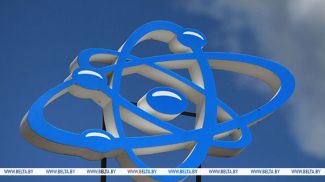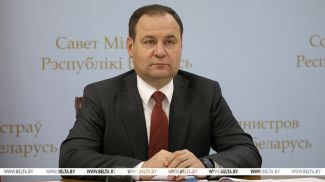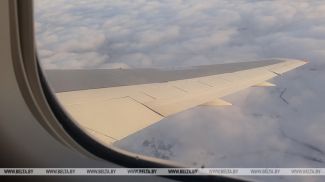MINSK, 18 October (BelTA) – A Belarusian-Swedish-Russian group has completed the second stage of initial background radiation measurements near the Belarusian nuclear power plant, BelTA learned from Aleksandr Dvornik, a member of the group, head of the Artificial Risk Modelling and Minimization Lab of the Radiobiology Institute of the National Academy of Sciences of Belarus.
The first stage of radiation measurements took place in Ostrovets in September. The second one has been completed this week. The research group included representatives of Lund University (Sweden), the Radiobiology Institute of the National Academy of Sciences of Belarus, the National Center for Hydrometeorology, Radioactive Pollution Control, and Environmental Monitoring, and the St Petersburg Radiation Hygiene Research Institute.
Aleksandr Dvornik explained: “During the second stage we measured the background radiation not near the nuclear power plant as we did during the first stage but a bit farther – roughly 30km away from the nuclear power plant, including near the state border. We took samples of soil, timber, plants, water from wells, rivers, and lakes.” Apart from that, local foods will be studied as well: potatoes, apples, mushrooms, and beetroot.
The collected samples will be sent to Sweden for analysis that will take about 3-4 months. A report with the results may be ready by March 2020.
Although similar evaluations were carried out in the area around the Belarusian nuclear power plant before, the current evaluation is supposed to enable independent monitoring of the environment as the basis for comparison and long-term observation in the future. The research group intends to carry out the same evaluation program in Lithuania not far from the Belarusian border but the specific timeframe has not been determined yet.
Aleksandr Dvornik noted: “We intend to get back to Ostrovets after the first unit is commissioned and after the second one is commissioned in order to repeat measurements. We would like to work out a permanent program later on in order to take measurements at permanent locations after certain periods of time.”
Apart from conventional tools designed to detect radioactive substances the team uses know-how from Lund University. Common edible salt is flattened into a kind of a pellet, which is then placed into a special container and left in control points for about one month. Salt can accumulate radioactivity. A special instrument is used to read the accumulated dose later on.
A research similar to the one carried out near the Belarusian nuclear power plant was performed during the construction of the European Spallation Source not far from Lund in Sweden. The European Spallation Source is a multi-disciplinary research facility where radiation may have an effect on the environment.











